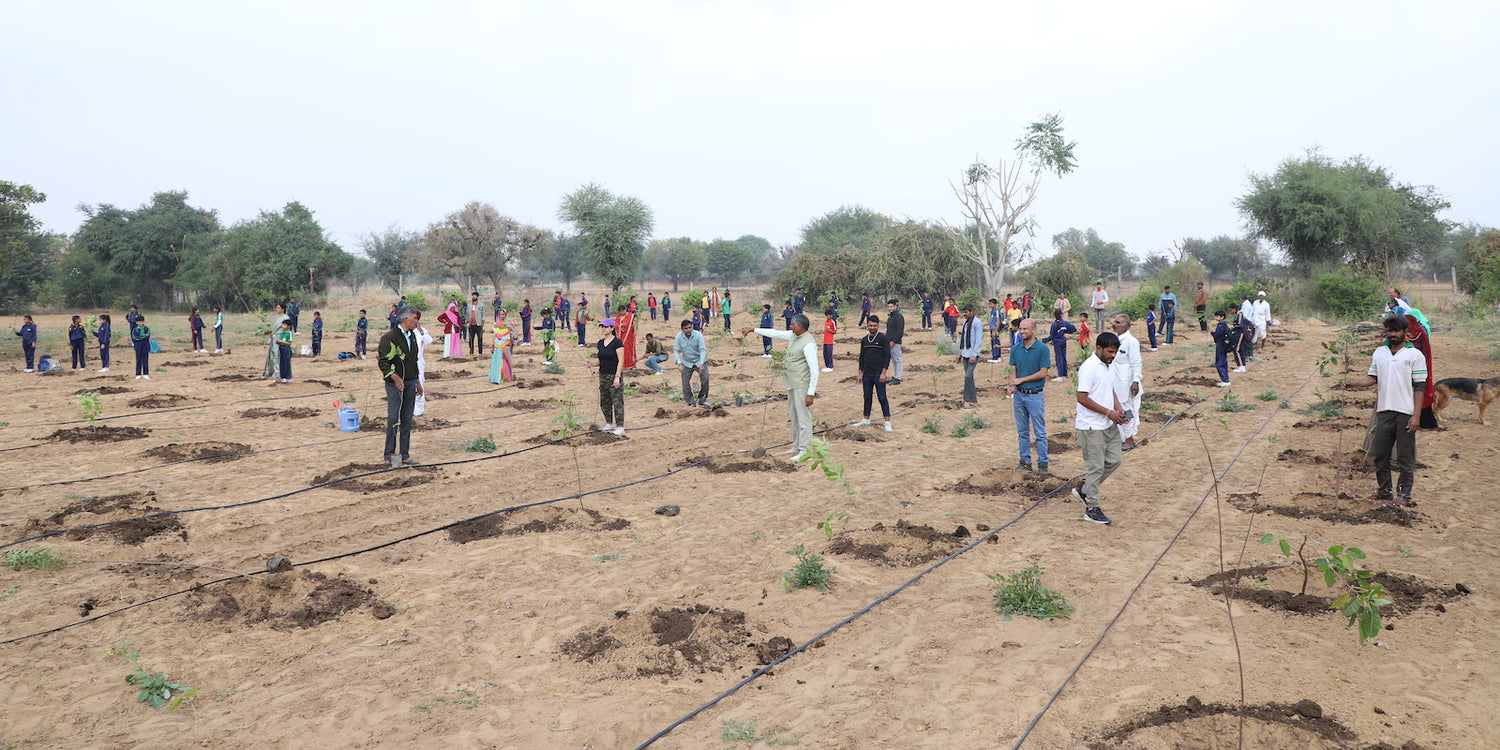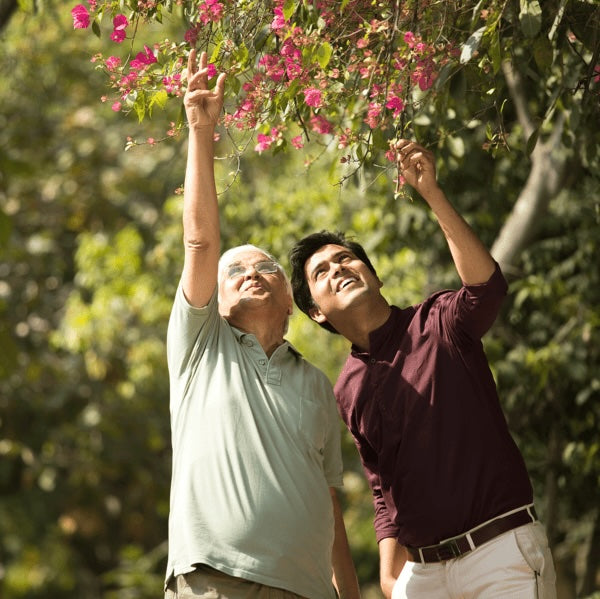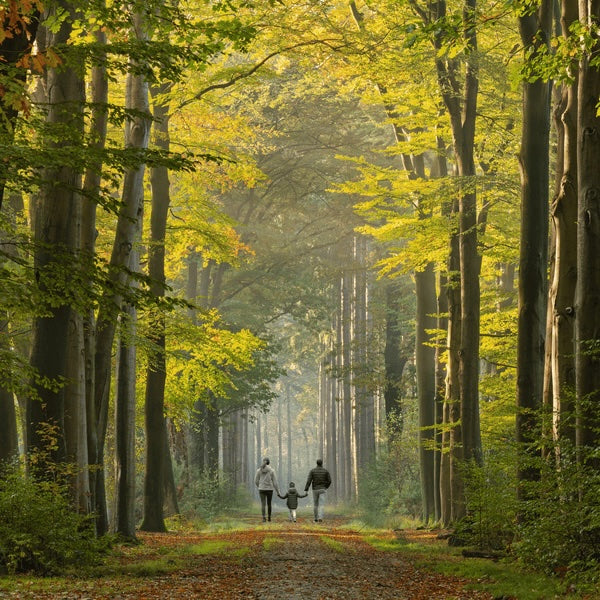Miyawaki Forest in India
India, a country known for its diverse ecosystems and rich biodiversity, is embracing a transformative approach to urban forestry through the Miyawak Read more
Connect with us
-
👥 Corporates
If you are looking for:
- 🌲 Tree Plantation Events
- 📊 CSR Projects
📧 corporate@growbilliontrees.com
📞 +91 9699723523
💬 +91 9325931304 WhatsApp (Only)
🕒 Mon - Sat | 10am - 7pm IST
-
🧩 Tree Plantation NGOs
If you are looking for:
- 💰 Financial Assistance
- 🤝 Operational Support
📧 support@growbilliontrees.com
📞 +91 9699723523
💬 +91 9325931304 WhatsApp (Only)
🕒 Mon - Sat | 10am - 7pm IST
-
🌼 Individuals
If you are looking for:
- 👥 Group Tree Plantation Drive
- 🌳 Bulk Tree Plantation
📞 +91 9699723523
💬 +91 9325931304 WhatsApp (Only)
🕒 Mon - Sat | 10am - 7pm IST
Plantation Gallery
Trending
Most Popular
Miyawaki Forest in India
India, a country known for its diverse ecosystems and rich biodiversity, is embracing a transformative approach to urban forestry through the Miyawaki method. This innovative technique, named after Japanese botanist Dr. Akira Miyawaki, is rapidly gaining traction across the nation. From bustling metropolises to smaller towns, Miyawaki forests are sprouting up, offering a breath of fresh air and a green escape from the concrete jungle.
This article delves into the Miyawaki method, its implementation in India, and the remarkable benefits it brings to urban environments.
What is the Miyawaki Method?
The Miyawaki method is a unique and effective approach to afforestation, aimed at creating dense, native forests in urban areas. This method involves planting a variety of native species close together, mimicking the natural ecosystem of a forest. The result is a dense, biodiverse forest that grows rapidly, typically reaching maturity in just a few years. The
Miyawaki method is renowned for its ability to create forests that are 30 times denser and grow 10 times faster than conventional plantations.
The Rise of Miyawaki Forests in India
India's urban landscapes are undergoing a green transformation, thanks to the widespread adoption of the Miyawaki method. Several cities and towns across the country have initiated Miyawaki forest projects, each contributing to the nation’s environmental sustainability and biodiversity.
Mumbai's Miyawaki Forests
Mumbai, India’s financial capital, is leading the way with several Miyawaki forest initiatives. One notable project is in the suburb of Kandivali, where a barren plot of land has been converted into a lush, green oasis. This forest, planted with over 50 species of native trees, has become a thriving ecosystem in just a few years. The success of this project has inspired similar initiatives across the city, transforming urban spaces into green havens.
Delhi's Urban Green Pockets
In the nation’s capital, Delhi, the Miyawaki method is being used to tackle severe air pollution and heat island effects. Numerous Miyawaki forests have been established in various parts of the city, including a significant project near the Yamuna River. These forests are not only improving air quality but also providing residents with much-needed green spaces for recreation and relaxation.
Bengaluru's Tech Parks and Beyond
Bengaluru, known as the Silicon Valley of India, is integrating Miyawaki forests into its tech parks and urban areas. Companies and residential communities are embracing this method to create green, sustainable environments. The rapid growth and dense vegetation of these forests are providing cooling effects, reducing pollution, and enhancing the overall quality of life in the city.
Benefits of Miyawaki Forests in India
The adoption of the Miyawaki method in India offers numerous benefits, contributing significantly to urban sustainability and environmental health. Here are some key advantages:
Rapid Growth and High Density
Miyawaki forests are known for their rapid growth and high density. In India, these forests have shown remarkable growth within a short span, providing dense green cover in urban areas. This quick turnaround is essential in cities facing rapid urbanization and diminishing green spaces.
Enhanced Biodiversity
By planting a variety of native species, Miyawaki forests promote biodiversity. These forests become havens for various flora and fauna, restoring the natural balance and providing habitats for local wildlife. In India, this biodiversity boost is crucial for maintaining ecological balance in urban environments.
Improved Air Quality
Urban areas in India often face significant air pollution challenges. Miyawaki forests act as natural air purifiers, absorbing pollutants and releasing oxygen. This leads to improved air quality, benefiting the health of residents and contributing to a cleaner environment.
Climate Resilience
Miyawaki forests enhance the resilience of cities to climate change. The dense vegetation helps regulate temperatures, reduce the urban heat island effect, and mitigate the impact of extreme weather conditions. This makes cities more resilient and adaptable to changing climate patterns.
Community Engagement and Awareness
Miyawaki forest projects in India have garnered significant community support and engagement. Local residents, schools, and organizations actively participate in plantation drives and maintenance activities. This fosters a sense of environmental responsibility and awareness, encouraging communities to take an active role in environmental conservation.
How to Create a Miyawaki Forest in India
Creating a Miyawaki forest involves several key steps:
- Site Selection and Preparation: Choose a suitable site, ideally a degraded or barren land, and prepare the soil by enriching it with organic matter.
- Species Selection: Select a diverse range of native species, including trees, shrubs, and ground covers, to mimic the natural ecosystem.
- Plantation: Plant the saplings close together, ensuring a mix of species to promote natural competition and growth.
- Maintenance: Provide regular watering, mulching, and weeding to support the young forest during its initial years. Once established, the forest requires minimal maintenance.
The Miyawaki forest projects in India are a testament to the country’s commitment to environmental sustainability and ecological restoration. By transforming urban spaces into dense, native forests, India is not only enhancing its green cover but also setting a benchmark for other nations to follow. These initiatives are a vital step towards a greener, healthier, and more sustainable future.
Embrace the Miyawaki method and join India in its journey towards creating thriving urban forests. Let’s make our cities greener, one forest at a time!
Miyawaki Method in India
India is experiencing a green revolution with the Miyawaki method, turning urban wastelands into thriving forests faster than you can say "Incredible India." This innovative technique, pioneered by Japanese botanist Dr. Akira Miyawaki, involves planting native species close together, resulting in forests that grow 10 times faster and are 30 times denser than traditional ones. From Mumbai's bustling streets to Delhi's urban sprawl, Nurserylive is leading the charge, transforming grey spaces into green havens. These Miyawaki forests not only beautify cities but also combat pollution, provide shade, and support local wildlife. It’s like Mother Nature’s fast-forward button, and the results are spectacular!
Urban Forestry in India
Urban forestry in India is getting a vibrant upgrade with the Miyawaki method. Imagine lush, dense forests springing up amidst the chaos of India's cities, from Kolkata’s historical charm to Bangalore’s tech parks. Urban forestry in India is all about reclaiming space for nature and enhancing the urban landscape. These mini-forests cool the air, filter pollutants, and offer peaceful retreats for city dwellers. At Nurserylive, we’re committed to expanding urban forestry, ensuring that India’s green cover keeps pace with its rapid urbanization. It’s like giving our cities a breath of fresh air, and the results are truly refreshing!
Native Species Plantation in India
Going native is the new trend in India, and we’re all for it! Native species plantation in India, especially with the Miyawaki method, is like throwing a homecoming party for local flora. These plants are perfectly adapted to the diverse climates and soils across the country, making them robust and low-maintenance. By planting a variety of indigenous species, we’re creating resilient forests that support local wildlife and enhance biodiversity. At Nurserylive, we believe in planting what belongs, ensuring these green spaces thrive naturally. So, next time you see a thriving forest in India, know it’s all about the locals!
Biodiversity Boost in India
India’s biodiversity is getting a fantastic boost, thanks to the Miyawaki forests sprouting up across the nation. These dense forests are like a VIP lounge for birds, insects, and small mammals. It’s nature’s way of throwing a party, and everyone’s invited! By enhancing biodiversity, these forests restore ecological balance and create thriving urban ecosystems. At Nurserylive, we’re dedicated to boosting biodiversity, ensuring that India’s green spaces are teeming with life and color. It’s not just about planting trees; it’s about bringing the whole gang back together!
Green Spaces in India
Let’s talk green spaces in India – the country’s new must-visit spots. With the Miyawaki method, we’re creating lush, dense forests faster than you can say “Namaste.” These green spaces are perfect for a morning jog, a leisurely stroll, or just a peaceful retreat from the city’s hustle. They’re not just pretty spots; they’re vital for cooling the air, filtering pollutants, and providing habitats for urban wildlife. At Nurserylive, we’re committed to expanding these green spaces, ensuring India stays cool, clean, and green. So, next time you need a break, just head to one of India’s new green lungs!
Miyawaki Forest Projects in India
India is buzzing with Miyawaki forest projects, and each one is a testament to the country’s green ambition. From community parks to corporate campuses, these projects are transforming barren patches into thriving forests. Each project showcases the power of the Miyawaki method, turning underutilized spaces into green jewels. At Nurserylive, we’re proud to lead these initiatives, making India a model of urban greening. So, whether you’re a nature enthusiast or just love a good transformation story, these Miyawaki forest projects are worth a visit!
Rapid Urban Greening in India
Rapid urban greening in India is not just a dream; it’s happening right before our eyes, thanks to the Miyawaki method. Imagine barren lands turning into lush forests within a few years. These fast-growing forests are cooling cities, cleaning the air, and providing beautiful green spaces for everyone to enjoy. At Nurserylive, we’re all about speed and efficiency, making sure India gets its green cover fast. It’s like nature on fast forward, and the results are spectacular. So, if you’re looking for a quick green fix, these Miyawaki forests are the place to be!
Miyawaki Forest Advantages in India
The advantages of Miyawaki forests in India are impressive and plentiful. These forests grow incredibly fast and dense, providing cities with instant green cover and improved air quality. They support a wide range of native species, boosting local biodiversity. Plus, they’re low-maintenance once established, making them a sustainable choice for urban greening. At Nurserylive, we’re focused on leveraging these advantages to make India greener and healthier. For a country facing rapid urbanization, Miyawaki forests are the perfect solution, ensuring a sustainable and vibrant urban environment.
You may like
Corporate Plantations
FAQ
What is a Miyawaki Forest and how is it different from traditional forests?
A Miyawaki Forest is a dense, fast-growing forest created using a unique afforestation technique developed by Japanese botanist Dr. Akira Miyawaki. Unlike traditional forests, which often use monoculture planting, the Miyawaki method involves planting a variety of native species close together to mimic a natural forest ecosystem. This approach results in forests that are 30 times denser and grow 10 times faster than conventional ones. At Nurserylive, we implement the Miyawaki method in India to create lush, biodiverse green spaces that enhance air quality, support local wildlife, and provide green oases in urban areas.
Why is the Miyawaki method suitable for urban areas in India?
The Miyawaki method is ideal for urban areas in India because it creates dense forests in small spaces within a short period. Urban environments face challenges like pollution, heat islands, and limited green cover. Miyawaki forests address these issues by rapidly increasing green cover, improving air quality, and providing cooling effects. Additionally, they support urban biodiversity by offering habitats for birds, insects, and small mammals. At Nurserylive, we leverage the Miyawaki method to enhance India's urban landscape, making cities more livable and environmentally sustainable.
How long does it take for a Miyawaki forest to mature in India?
A Miyawaki forest typically matures in 20 to 30 years, significantly faster than traditional forests, which can take 100 years or more. The initial growth phase is rapid, with noticeable development within the first three years. This swift growth is due to the dense planting and natural competition among diverse species. In India, our Nurserylive projects have demonstrated impressive results, with young forests flourishing quickly and providing immediate ecological and aesthetic benefits to urban areas.
What types of trees are planted in a Miyawaki forest in India?
In India, a Miyawaki forest is planted with a variety of native species suited to the local climate and soil conditions. These include trees, shrubs, and ground covers that naturally occur in the region. Common species might include neem, peepal, banyan, and indigenous flowering plants. At Nurserylive, we carefully select a mix of native species to promote biodiversity and resilience. By focusing on local flora, we ensure that the forests are sustainable, support local wildlife, and thrive in India's diverse environments.
How does the Miyawaki method improve air quality in India?
Miyawaki forests improve air quality by absorbing pollutants like carbon dioxide, sulfur dioxide, and nitrogen oxides, and by releasing oxygen. The dense vegetation acts as a natural air filter, trapping dust and particulate matter. In India's urban areas, where air pollution is a significant concern, these forests play a crucial role in mitigating pollution and enhancing the urban environment. At Nurserylive, we prioritize the creation of Miyawaki forests to help purify the air, making cities healthier for their residents.
Can Miyawaki forests help mitigate the urban heat island effect in India?
Yes, Miyawaki forests can significantly mitigate the urban heat island effect. The dense canopy of trees provides shade, cools the air through transpiration, and reduces surface temperatures. This is particularly beneficial in urban areas where concrete and asphalt absorb and retain heat. By establishing Miyawaki forests, Nurserylive helps lower ambient temperatures, creating cooler, more comfortable urban environments and reducing the need for artificial cooling.
What is the process of creating a Miyawaki forest in India?
Creating a Miyawaki forest involves several key stepssite selection, soil preparation, species selection, plantation, and maintenance. At Nurserylive, we begin by selecting a suitable site and preparing the soil with organic matter to enhance fertility. We then select a diverse range of native species and plant them close together to promote rapid growth and natural competition. The initial maintenance phase includes regular watering, mulching, and weeding. Once established, the forest requires minimal care and thrives naturally, contributing to the urban ecosystem in India.
How can residents of India participate in Miyawaki forest projects?
Residents of India can participate in Miyawaki forest projects through community planting events, volunteer programs, and by supporting local environmental organizations. Nurserylive often organizes plantation drives and workshops to educate the public about the benefits of Miyawaki forests and how to create them. By getting involved, residents can contribute to the greening of their city, improve their local environment, and foster a sense of community and environmental responsibility.
What are the long-term benefits of Miyawaki forests for India?
The long-term benefits of Miyawaki forests for India include enhanced biodiversity, improved air quality, reduced urban heat, increased green cover, and greater community engagement. These forests provide habitats for wildlife, contribute to soil and water conservation, and offer recreational and aesthetic value to urban spaces. At Nurserylive, we believe that Miyawaki forests are a sustainable solution for urban greening, providing lasting ecological and social benefits for cities and their residents.
How does the Miyawaki method promote biodiversity in urban areas?
The Miyawaki method promotes biodiversity by planting a variety of native species in close proximity, creating a multi-layered forest structure. This diverse plant community supports a wide range of fauna, including birds, insects, and small mammals. In urban areas, this approach helps restore ecological balance and provides essential habitats for wildlife. Nurserylive's Miyawaki projects are designed to enhance urban biodiversity, creating green spaces that are rich in flora and fauna.
Are Miyawaki forests sustainable in the long term for India?
Yes, Miyawaki forests are highly sustainable in the long term. Once established, they require minimal maintenance, relying on natural processes to thrive. These forests are self-sustaining, resilient to environmental changes, and capable of supporting diverse ecosystems. In India, Nurserylive's Miyawaki forests have demonstrated sustainability by flourishing with little human intervention after the initial growth phase, ensuring they remain a lasting part of the urban landscape.
How do Miyawaki forests enhance community well-being in India?
Miyawaki forests enhance community well-being by providing green spaces for recreation, relaxation, and social interaction. These forests improve air quality, reduce noise pollution, and create cooler microclimates, contributing to better health and comfort for residents. Additionally, community involvement in planting and maintaining Miyawaki forests fosters a sense of pride and ownership. At Nurserylive, we focus on creating green spaces that benefit both the environment and the people, making India's cities more livable and vibrant.


















